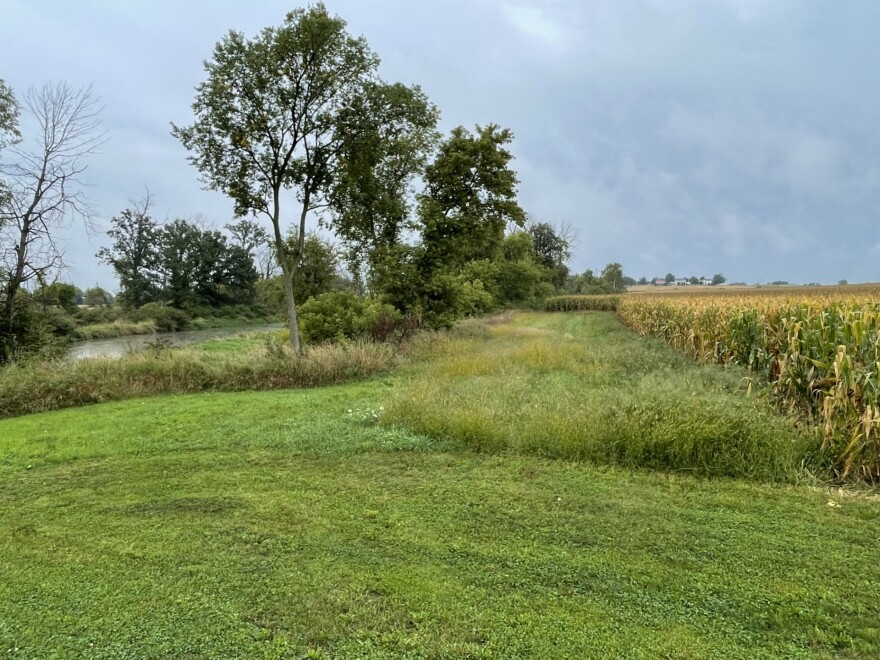Managing water — or attempting to — in our urban and rural areas is a complicated task. That includes controlling stormwater, treating wastewater and managing farm fields to reduce runoff into rivers, lakes and streams. Wisconsin’s erratic winter weather is making those efforts tougher.
That's part of Erik Joost's job. He's watershed manager for the city of Oconomowoc.
“(My main job is) facilitating a Wisconsin Discharge Pollutant Elimination System Permit with the DNR to manage phosphorus compliance in the Oconomowoc River,” Joost says.
Phosphorus is widely used to fertilize crops. Rain can carry that nutrient into lakes and streams. In those watery environments, phosphorus fuels the growth of algae that can throw ecosystems out of balance and can be toxic.
That makes managing phosphorus complex. But when he came on board two years ago, Joost had a head start. In 2015, The city began teaming up with area conservationists, farmers and lake associations to create the Oconomowoc Watershed Protection Program.
Together they’ve remaindered creeks, restored stream banks and spearheaded farmland projects to reduce runoff.

There are 17 lakes within the watershed. Joost says they play a role in how phosphorus moves through the system.
“Those lakes act as an area where water can slow down. So if a river is flowing and carrying sediment, every time that river enters a lake, the sediment is able to settle out of the water column and rest on the bottom (of the lake), which improves the phosphorus concentration as the water keeps flowing down through the watershed,” Joost says.

Jeff Bode is part of the watershed effort. He lives on Lac La Belle and says the ultimate goal is reduce phosphorus impacts throughout the entire watershed.
“There’s lots of work that needs to be done out there. Some is nonpoint source, where we need to actually control some of the invasive species that are along the shorelines and stabilize those shorelines,” Bode says.
Bode says climate change makes the work harder.
“What I’ve perceived is that we seem to be not be getting the same amount of snowfall we have through the winters, which allows the frost basically to penetrate deeper into the soil. But in the spring it seems like then we get higher intensity storms that are occurring after a period of not much snow,” Bode says.
Erik Joost says those extremes cause more intense phosphorus runoff.
“A huge percentage of the phosphorus that comes into a watershed isn’t on the daily river flow that you can’t manage, but it’s when there’s a serious runoff event that causes erosion or that causes streams to have a higher flow and lets sediment that’s been deposited there flow on downstream,” Joost says.

John Koepke is among the people puzzling out how to navigate the changing climate.
His family's 150 year old dairy farm falls within the Oconomowoc watershed.
Koepke grows diverse crops and says his goal is to come as close as he can to mimicking mother nature.
“My familym my father and my uncle adopted something called no till technology and they first experimented with it in 1986. That has really allowed a lot more earth worm activity and soil fungus and bacteria to come back,” Koepke says.

Jerome Flogel is tackling a different sort of challenge. He’s with the Milwaukee Metropolitan Sewerage District or MMSD. His work focuses on managing the flow of stormwater in urban areas. I met him on a windy 15-acre parcel in Milwaukee’s 30th Street Corridor on the city’s northwest side. It’s a highly developed area that once teamed with manufacturing.
The MMSD is building a huge basin to slow the flow of rainwater.
“This basin here will be a 30 million gallons capacity,” Flogel says. It’s part of a three-basin project. Right now, this parcel is bare except for a huge hole in the ground.
“There’s really big pipes that are going to be coming in here. Box culverts you can drive your car through ‘em. So then the basin is designed to hold the capacity and drain out within about 24 to 48 hours,” Flogel says.
The basin is meant to handle heavy storms that overwhelm the capacity of the water treatment system and spill into basements.
The project is vital to surrounding neighborhoods, which suffered from devastating flooding—most recently in 2008 and 2010.
The basin system is massive and an engineering feat. But Flogel says the MMSD can’t compensate for the erratic conditions Wisconsin’s winters may bring.
“Because we can get an event, you know, like we’ve seen in the last, let’s say month, where we have these swings in temperature, and it gets to 50 degrees, and we have an inch of rain. And then it just makes it worse, if we’ve gone through a cold period and we have frozen ground and we have zero permeability pretty much and it’s all gonna be runoff,” Flogel says.
Flogel says these days, the sewerage district has to be prepared to manage stormwater pretty much 12 months out of the year.












